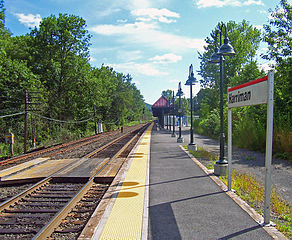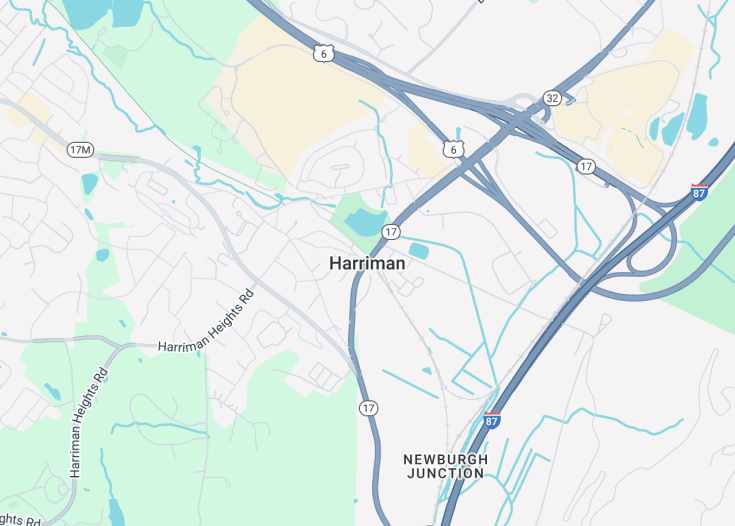Nestled in Orange County, New York, Harriman is a captivating village that promises a mix of serene nature and rich history. Renowned for its proximity to Harriman State Park, the area offers endless opportunities for hiking, fishing, and wildlife viewing. The village itself, though small, holds charming local eateries and boutiques, making it a perfect retreat for those looking to escape the bustling city life. Visitors can also explore historical landmarks and engage in seasonal community events, enhancing their travel experience with local flavors and traditions.
For hiking enthusiasts, don’t miss exploring the numerous trails in Harriman State Park. Consider visiting in fall to witness the mesmerizing autumn foliage.
Plan your visit during one of Harriman’s local festivals to immerse yourself fully in the small-town charm and community spirit typical of the area.
Top things to do & see in Harriman
Select the following sights and activities to discover best tickets and tours available in Harriman.
Harriman: A Gateway to Natural Beauty and History
| Country | USA |
| Time in Harriman | GMT-5 |
| Language spoken | English |
| Population | 2,411 (US Census Bureau) |
| Currency | United States Dollar (USD $) |
| Airports |
|
Located in Orange County, New York, Harriman is a quaint village within the Greater New York area. While it may be small in size, Harriman boasts a rich history and has become a hub for outdoor activities and cultural tourism. Founded in the late 19th century, the village was originally developed alongside the local railroad industry, but today it is better known for its proximity to the Harriman State Park—one of New York State’s largest parks. This park offers a plethora of recreational activities including hiking, fishing, camping, and picnicking, making Harriman a favored destination among nature enthusiasts.
The village is also noted for its historical architecture, with several buildings dating back to the early 20th century positioned neatly along its few quiet streets. The economic and social life of Harriman is also influenced by Woodbury Common Premium Outlets, one of the largest outlet centers in the world. Nestled near major highways, its location helps boost the local economy through tourism, with visitors streaming in from New York City, Connecticut, and New Jersey.
Where is Harriman?
Located in southeastern New York, Harriman lies within Orange County. Nestled in the Hudson Valley, it serves as a peaceful respite not far from the bustling life of New York City.
Distances:
| Route | Distance by car | Time by car |
| New York City to Harriman | 50 miles | 1 hour 15 mins |
| Albany to Harriman | 115 miles | 2 hours 10 mins |
| Buffalo to Harriman | 362 miles | 5 hours 50 mins |
What is Harriman famous for?
Harriman is renowned for its close proximity to the Harriman State Park, which offers extensive trails and beautiful scenic views. Its pivotal position near major transportation hubs and shopping centers like Woodbury Common also adds to its fame.
History
Before 1700: Early Settlements
The area now known as Harriman in New York (USA) saw its first seasonal settlements by the native Lenape people, who used the land primarily for hunting and fishing. Due to its lush forests and abundant wildlife, it was a valuable resource for the indigenous tribes.
1700-1800: European Colonization
The arrival of European settlers marked a significant transformation in the region. It was during the 18th century that the area began to develop as agricultural land was cleared and cultivated, and small communities started to form. By the late 1700s, the Harriman area was part of larger estates owned by influential colonial families, who played vital roles in the local economy.
1800-1900: Industrialization and Development
The 19th century brought industrialization to Harriman, with the establishment of various mills and factories along the nearby rivers, exploiting the natural water power sources. The railroad arrived in the mid-1800s, significantly boosting local development by linking Harriman to larger markets and making it a hub for trade and transportation.
1900-Present: Modern Growth
In the 20th century, Harriman underwent substantial changes, transitioning from an industrial society to a more service-oriented community. The establishment of the Harriman State Park in the early 1900s was pivotal, as it not only preserved large areas of natural beauty but also attracted tourists and recreation enthusiasts to the region. Today, Harriman is recognized for its blend of historical charm and modern amenities, making it a unique place in the fabric of New York’s cultural and economic landscape.
Visit Harriman
What to see and do in Harriman, New York (USA).
Harriman, New York offers a plethora of activities and sites for visitors. The prominent Harriman State Park invites nature lovers to explore its scenic trails, picnic areas, and dozens of lakes. Ideal for hiking, fishing, and boating, the park is a central attraction.
- Explore the historic downtown area with its quaint shops and local eateries.
- Visit the Woodbury Common Premium Outlets for a shopping spree.
- Take a scenic drive through the Bear Mountain State Park.
Additionally, the area’s rich history can be appreciated by visiting local museums and heritage sites that chronicle its past.
Festive Traditions in Harriman
Harriman hosts several annual events that attract tourists and celebrate the community spirit. Notable among them is the Harriman Festival, held every September, featuring local music, crafts, and food stalls. In the winter, the Harriman Winter Fest delights with its ice sculpting contests and hot chocolate stations.
Best time to visit Harriman
The best time to visit Harriman is from late spring to early fall (May to October) when the weather is most agreeable for outdoor activities. This period also aligns with many of the local festivals and events, offering a fuller experience of the area’s culture.
Is Harriman worth visiting?
Harriman, New York, is decidedly worth a visit for those who delight in natural beauty, historical exploration, and small-town charm. The proximity to Harriman State Park presents ample opportunities for outdoor activities. However, visitors looking for vibrant nightlife or large cultural festivals may find it less appealing. Travelers should also be mindful of seasonal accessibilities, especially in winter when some attractions might be less accessible.










